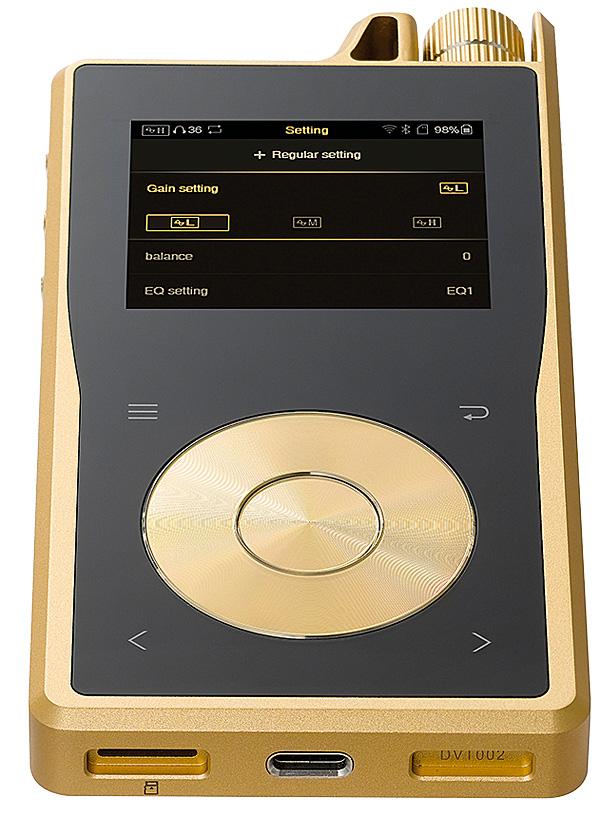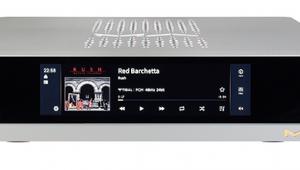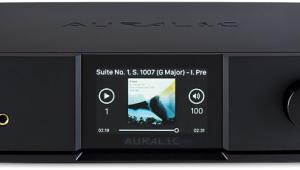Questyle Audio QP2R/HB2 portable audio player

 It's costlier still than its predecessor, but Questyle's updated portable Digital Audio Player-and-dock combo delivers great sound quality – both at home and on the road
It's costlier still than its predecessor, but Questyle's updated portable Digital Audio Player-and-dock combo delivers great sound quality – both at home and on the road
Shenzhen-based brand Questyle impressed the pundits with its debut QP1R digital audio player (DAP), launched back in 2015 at just the right time to exploit the increased interest in high-quality portable players and DACs. At first glance, the new QP2R looks very similar, with the same rugged and sturdy design – available in either gold or an Apple-esque 'space-grey' – and that distinctive armour-plated volume control protruding from the top of the device.
On closer inspection, the QP2R boasts a number of new features and improvements to offset its higher price, vaulting past the QP1R's £700 ticket to a full £1199. Not least, the QP2R sweetens the pill by doubling its internal storage to 64GB with support for a further 2TB via its micro-SD card slot (the QP1R supported just 200GB).
High-End Ambitions
The QP2R also has ambitions to be more than just a portable player, as Questyle now provides an optional dock unit, called the HB2 'HiFi Hub', designed for indoor use. The HB2 costs an additional £599, but includes a remote control and charging features for the QP2R, along with additional digital and analogue outputs that allow you to use the QP2R as part of your existing home hi-fi system [see Sidebar]. This brings the total cost of the QP2R and HB2 to around £1800, and pitches the player headlong into the rarefied high-end DAP market traditionally dominated by the likes of Astell & Kern.
Like its predecessor, the QP2R is a quaint combination of high-tech features and retro design. The chunky aluminium casing looks distinctly old-school, measuring 65x134x14.5mm (whd), and weighing 200g. It's almost 50% heavier than my iPhone 7, and those dimensions mean that you are more likely to carry it around in a briefcase or backpack, rather than slipping it into a pocket alongside your smartphone. It is, however, very sturdy, and is complemented by scratch-resistant Gorilla Glass used on the front and back panels. Even the somewhat inelegant volume dial, protruding a further 14mm up from the top corner of the device, is protected by small metal 'arms' helping to prevent it getting turned – or indeed, snapped off – by accident.

And, of course, there's that mechanical scrolling wheel on the front, which clearly harks back to the turn-of-the-century design of the very first Apple iPod. The QP2R's 2.4in screen isn't touch-sensitive so, as with the old iPod, the scrolling wheel is the primary control for browsing through your music library and navigating through the various options in the main Settings menu. I did find the wheel mechanism a little over-sensitive at first, sometimes causing me to accidentally skip past the setting or track I wanted to select, but it didn't take too long to get a feel for it. There's also a menu option that allows you to lower the sensitivity of the wheel, and another for increasing the size of text and on-screen brightness.
The screen may not be touch-sensitive, but there are four touch-sensitive buttons located within the glass panel surrounding the scroll wheel. The top two allow you to quickly open the Settings menu and step back to the previous sub-menu without using the wheel, while the lower buttons act as the Forward/Back controls when playing music. You can also control playback using the three mechanical buttons on the left-edge of the device. These weren't included on the original QP1R, and they now allow you to control your music without having to pick up the QP2R in order to use the scroll wheel.
DXD And DSD Too
The design might be rather retro, but there's nothing old-fashioned about the technology inside the QP2R. It's based on AKM's AK4490 'Velvet Sound' DAC which has proved its worth in desktop devices such as the Pro-Ject DS2 range [HFN Nov '17]. However, pride of place goes to Questyle's Class A 'current mode amplification' that we saw in the CMA800R headphone preamp and CMA800P line preamp [HFN Jan '17 and Jul '17]. High-res support has been updated too, with the QP2R now accommodating 384kHz/32-bit and DSD256 files while offering both 3.5mm and 2.5mm (balanced) headphone connectors. The 3.5mm port also doubles up for optical output, downsampling music files to 192kHz.
There are a few rough edges, though. The QP2R uses a USB-C interface to connect to a PC or Mac – with an adapter cable included in the box – and it's easy to copy your music library across via USB or a micro-SD memory card. However, there's no software provided with the QP2R that would help you to copy existing playlists, so you'll have to start all over and create new playlists on the device itself.




















































